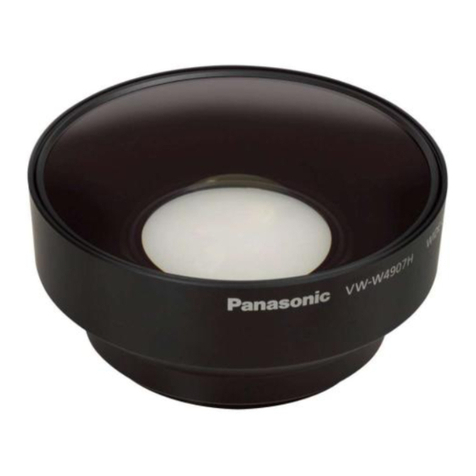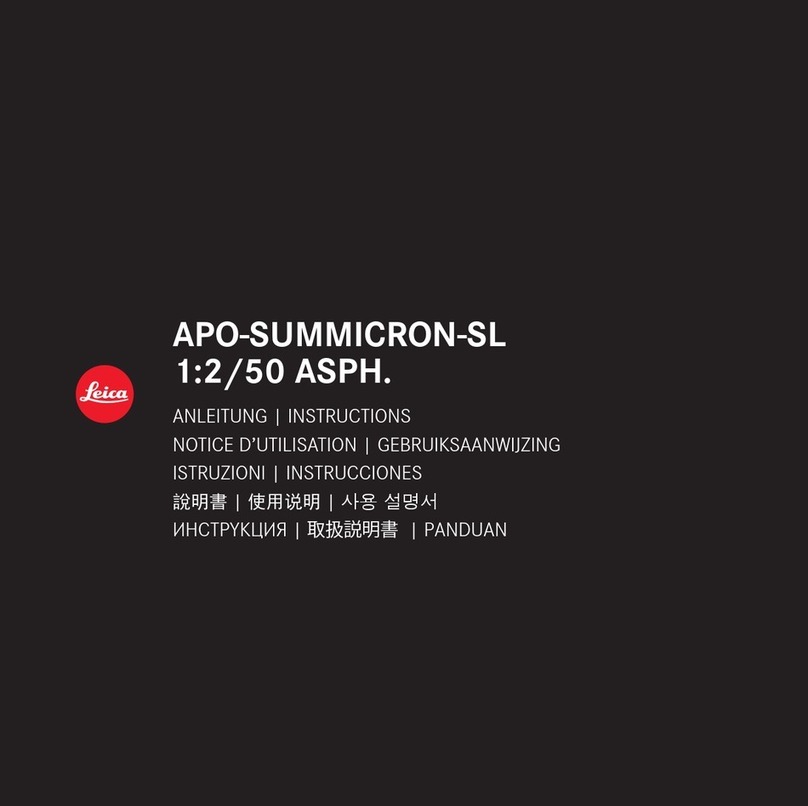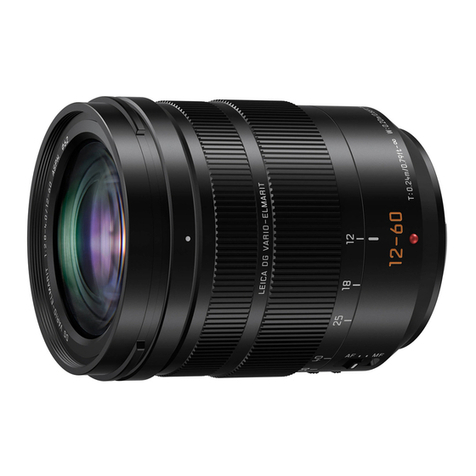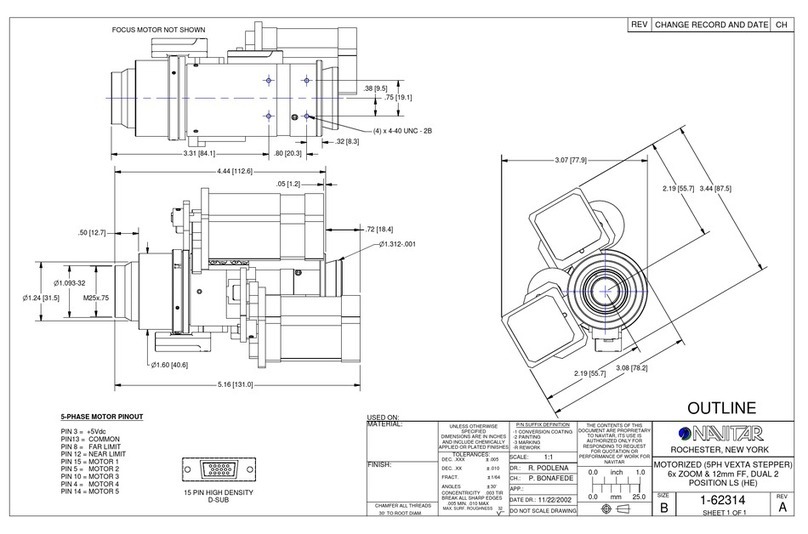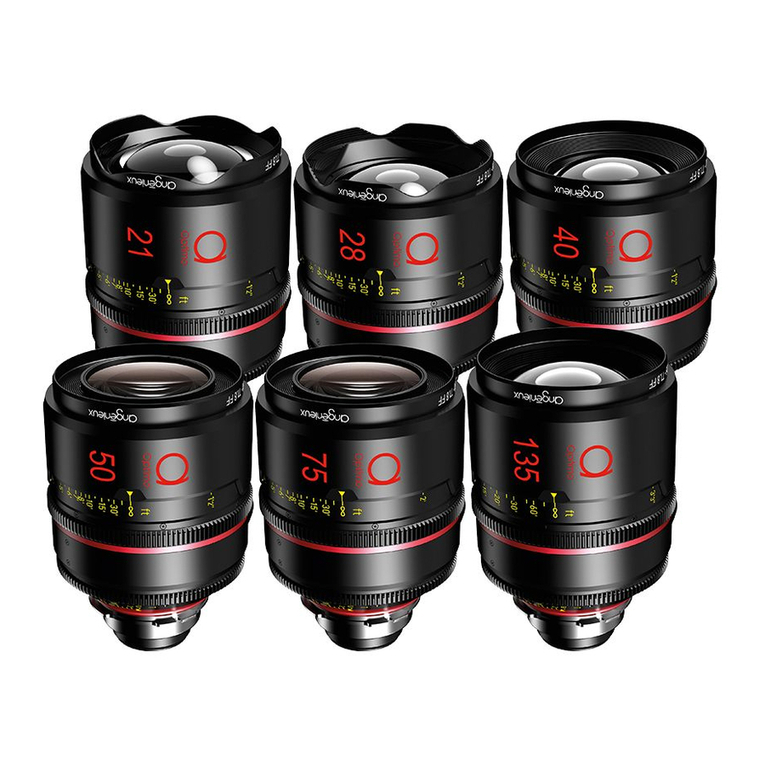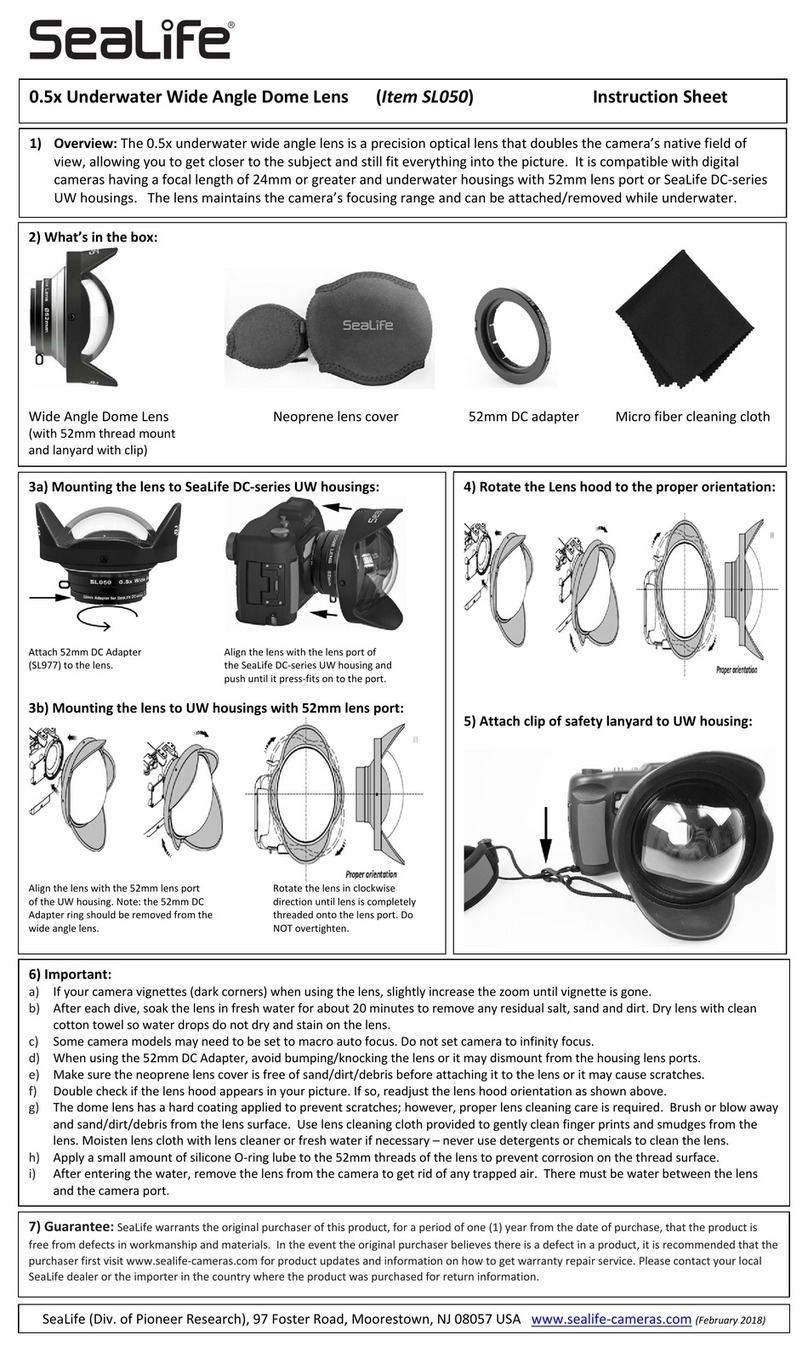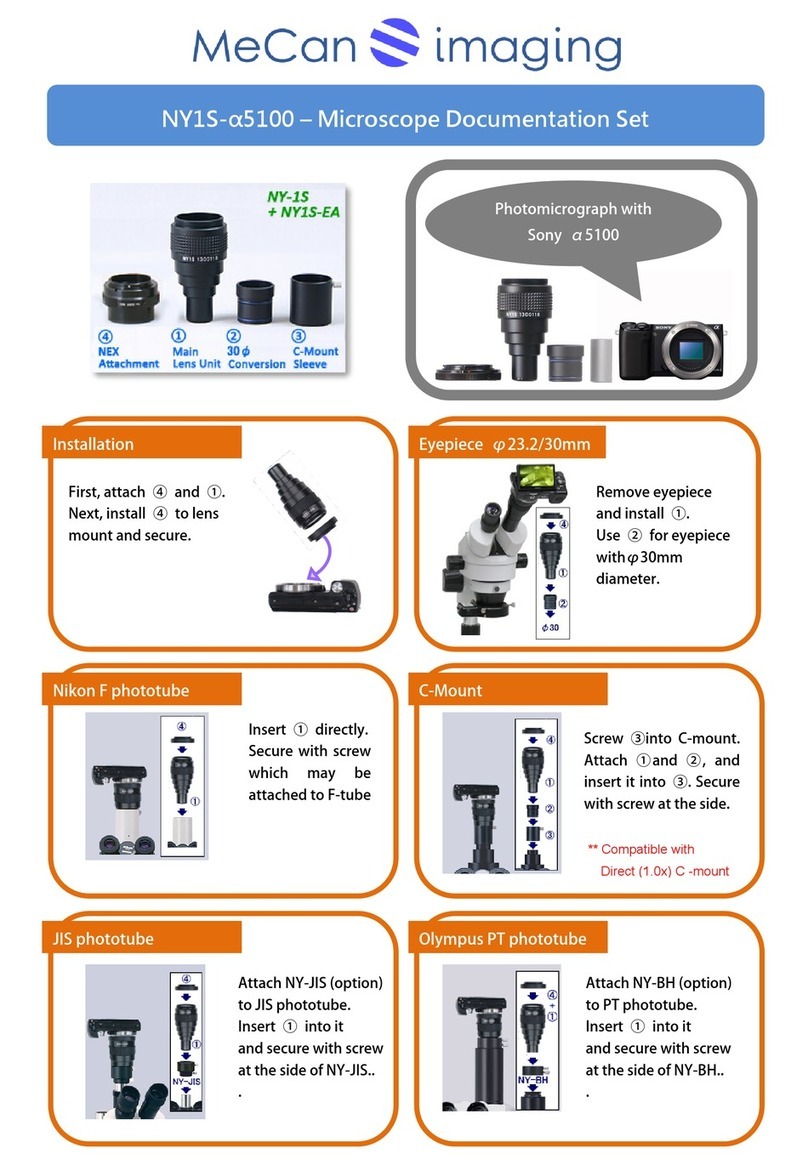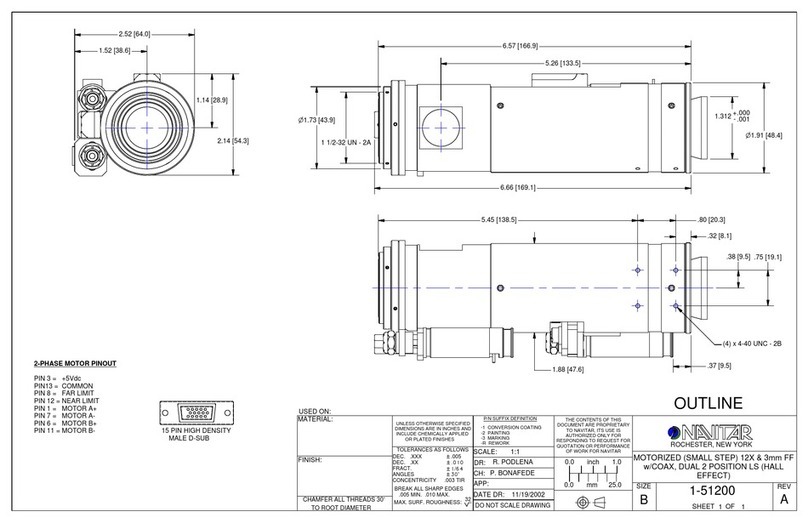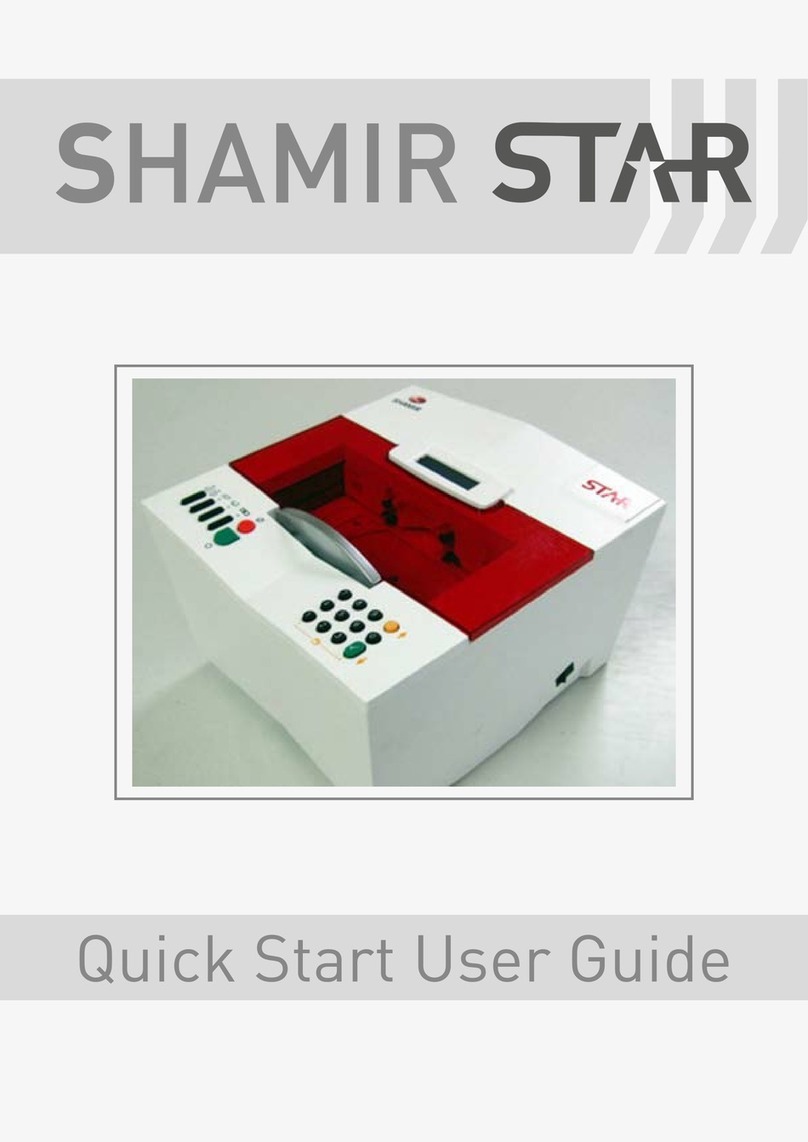4
4. Filters
Normal (IA Skylight): This filter should be used whenever no other filter is necessary.
ND 2X and ND 4X (Neutral Density): These filters control the light passage since no diaphragm
system is provided in the reflex lens. Exposure factor is 4
times with a ND4X, i.e., the light in-take through the lens is
decreased similarly as it, stopping-down a normal lens with
an aperture, by 2 stops.
NOTE: ND filters reduce light passage only, and the depth of field cannot be changed.
Y52 (Yellow): This filter is used when taking black and white pictures. It makes a blue
background darker. Quite effective when taking shots of clouds on a blue
horizon.
056 (Orange): This filter makes blue or green color lines darker and yellow or red color lines
lighter than seen with the human eye. Quite effective when stronger contrast
is desired.
R60 (Red): Used to express day-time scenery as a night scene, or emphasis and strengthen
contrast exceptionally. Also necessary when taking infrared black and white
exposures.
NOTE : In case the subject to be taken indicates too much light or overexposure as indicated
by an exposure meter reading, or LED warning signal of the camera, adjustment of
the light in-take is controlled by using one of the ND filters. When using a R60 filter
with an aperture preferred camera, an aperture adjustment to the camera between
+0.5 to +1.0 is required.
5. Exposure or aperture adjustment with TTL- cameras
Since tile aperture of the reflex lens cannot be changed, the exposure is controlled entirely
upon the shutter-speed being used. The shutter speed is set according to your TTL reading.
Both aperture and shutter priority automatic cameras will automatically set the right speed
with its auto exposure mechanism, except a few models, on which it is necessary to operate
on a manual function.
In aperture priority or manual operation of a camera, appropriate shutter speed must be
adjusted using 3 neutral density filter in case of overexposure readings or the camera's LED
warning light is activated.
If your camera is a manual TTL system, then simply follow the exposure indicator in the
viewfinder by compensating with the shutter speed. In case of excessive light beyond the
shutter speed capability, attach a Neutral Density filter to reduce the overall light passage.

